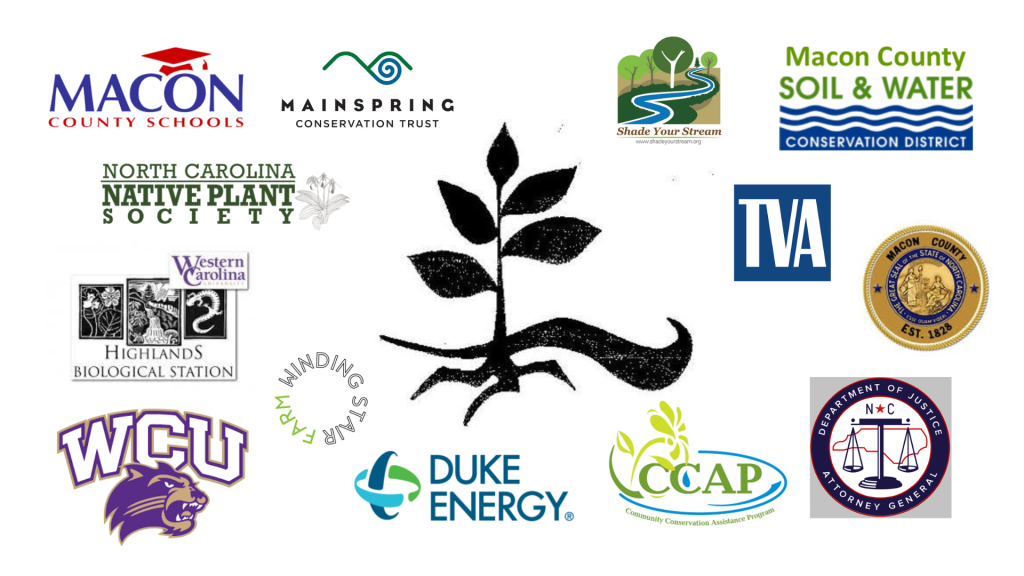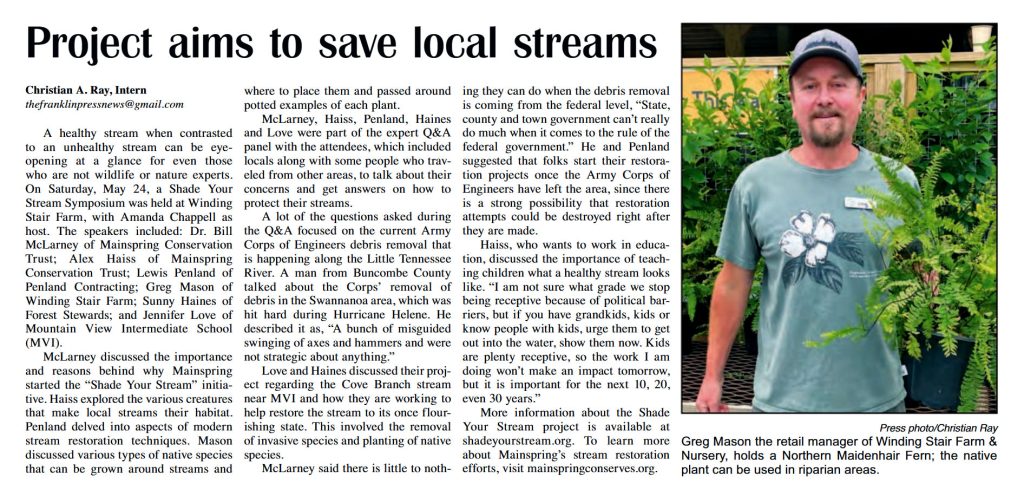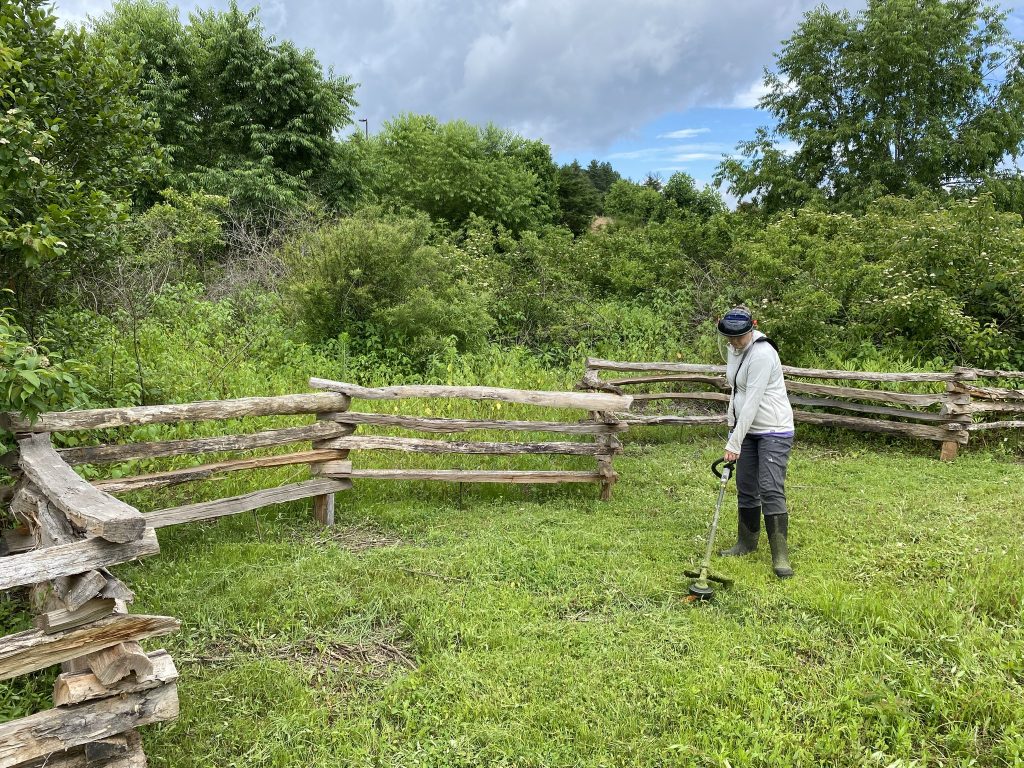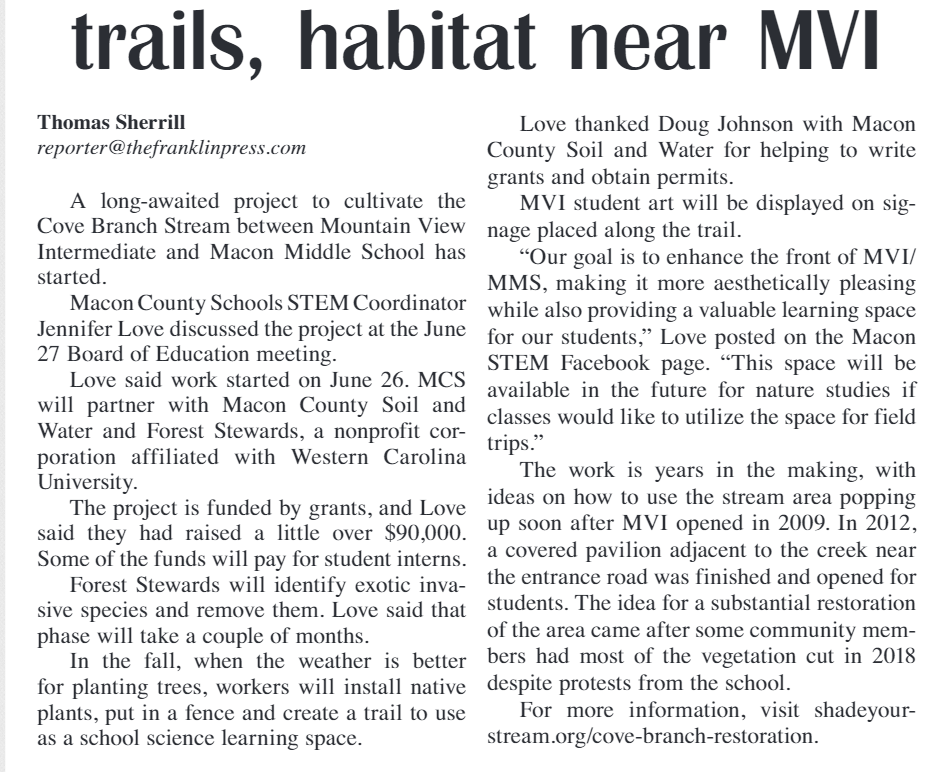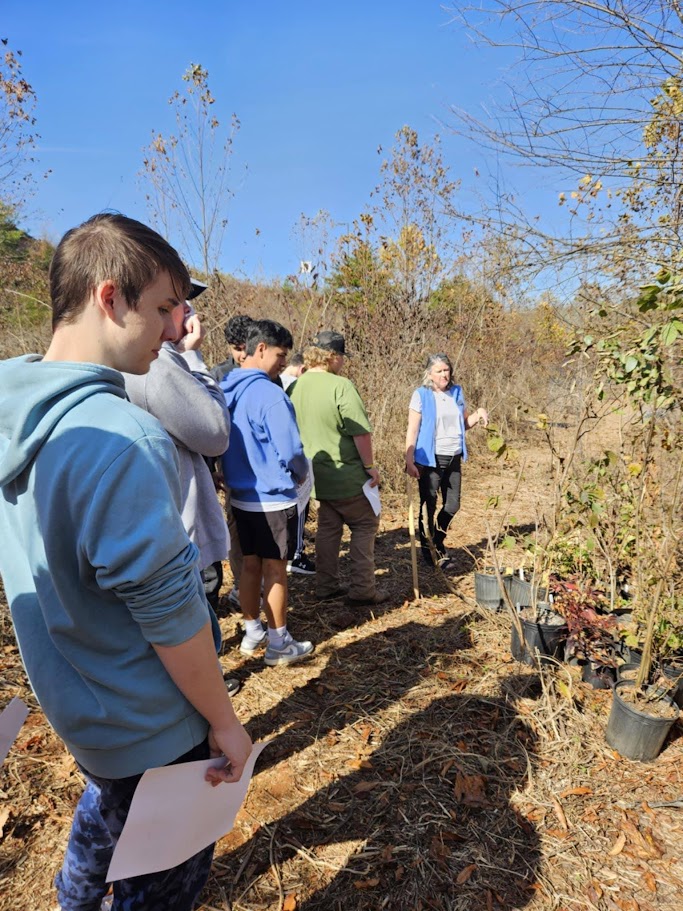
Key Project Goals
- Living Laboratory
- Establish educational trails and signage
- Plant 240 native trees/shrubs and 100 lbs. of native grass seed for stream bank stabilization
- Install over 400 feet of locust rail fencing to protect the riparian buffer from mowing
- Conduct pre- and post-treatment stream health inventories in collaboration with students and Mainspring Conservation Trust
- Shade Your Stream Initiative
- Educational signage onsite
- Project featured on the Shade Your Stream website
- Public event hosted at Winding Stair Nursery
- Stream Habitat Restoration on Cove Branch (Porter’s Creek)
- Located within the Little Tennessee River Watershed
- In partnership with Forest Stewards (Western Carolina University):
- Native plant assessment and inventory
- Invasive species removal
- Planting of native trees and shrubs
This project has been a labor of love since its early planning stages in 2009. In July 2025, we are proud to celebrate a major milestone in the development of our Schoolyard Classroom on Cove Branch, marking the beginning of long-term efforts to improve water quality within the Little Tennessee River Watershed. We anticipate that these actions will positively impact biodiversity through enhanced habitat and reduced sedimentation.
Habitat Restoration, Fencing, and Signage
In Summer 2024, we partnered with Forest Stewards, a nonprofit affiliated with Western Carolina University. Their paid student interns, focused on natural resource management, conducted an inventory of native plant species along the site. Notable finds included patches of sensitive fern, marsh mallow, elderberry, and swamp milkweed.
The team removed invasive species—such as Bradford pear and privet—using riparian-safe herbicides. Following this, they planted 240 native potted plants, each protected with weed mats. Some trees were caged or placed in tree tubes to protect against beaver and deer browsing. Native grass seed was distributed across the riparian zone on both stream banks.
To allow access and maintenance, trails were created on both sides of the stream. These are now maintained bi-weekly by community volunteers. Outside the riparian buffer, fescue was planted to maintain a park-like appearance from the road, per public preference. This area is now maintained by school custodians.
Installing locust log rail fencing proved to be a challenge due to material availability. Eventually, materials were sourced from a local landscape supplier. The LBJ Job Corps partnered on the project, with students installing the fencing over two weeks. Rebar was added to anchor the lower rails and improve stability during flood events. The rails were also drilled and secured together to prevent theft and movement.
In June 2025, Signs Express installed three metal sign bases on site. The final interpretive signage is scheduled to be installed this week. Maintenance equipment, including an electric weed eater and lawn mower, has been purchased for volunteer use.
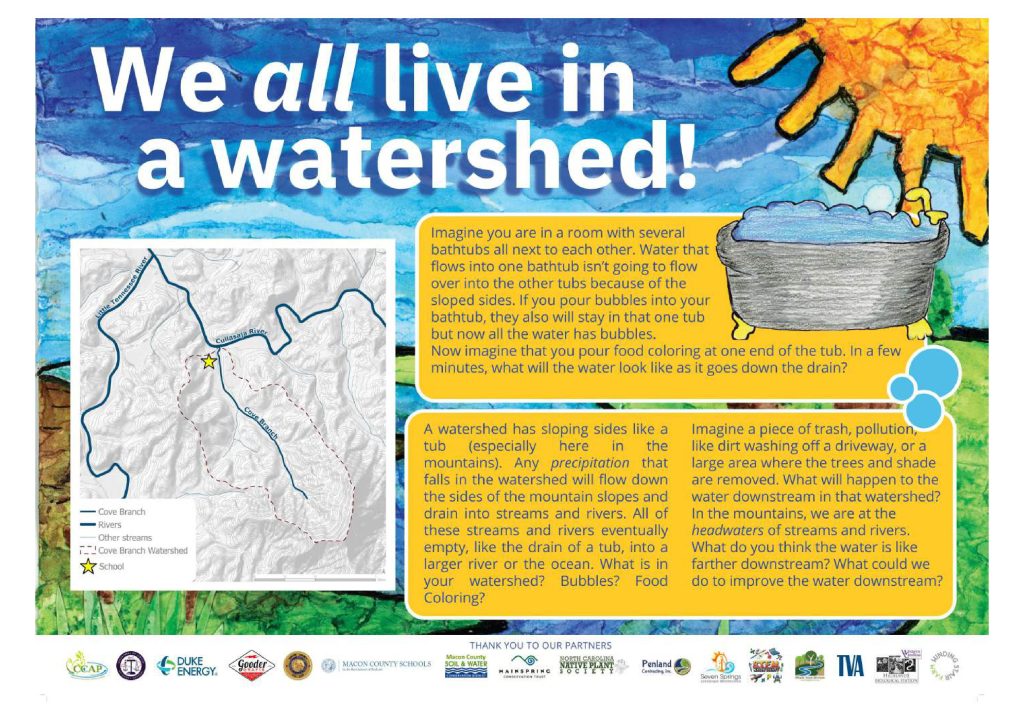
Educational Engagement
Since 2020, Macon Middle School’s Natural Resources teacher has incorporated the site into student fieldwork, including Stream Visual Assessment Protocol (SVAP) studies and aquatic life sampling using dip and seine nets. As of Spring 2025, Franklin High School Natural Resources students began exploring the site for animal tracking activities.
Looking ahead to the 2025–2026 school year:
- These programs will expand to include native plant education and stream health studies.
- Mountain View Intermediate School’s Outdoor Explorations class will use the trails for nature walks and science instruction.
- Macon Middle’s STEM program will contribute by 3D-printing phenology stands for use at the site.
- Wildlife cameras, previously installed and unfortunately stolen in Spring 2025, will be reinstalled.
In May 2025, a Shade Your Stream awareness event was hosted at Winding Stair Nursery. The day concluded with a site visit to Cove Branch for interested participants. In June 2025, students in the Summer Edventure Camp engaged with the site daily during two weeks of Muddy Sneakers environmental programming.
Future Work & Funding Needs
Despite major progress, additional work remains:
- Parking Lot Runoff: The project’s original scope included stormwater runoff mitigation from the school parking lot. Due to delays from the COVID-19 pandemic and changes related to a “no-rise” assessment, this portion was postponed. A current quote estimates $22,000 is needed to complete this work.
- Water Quality Monitoring Equipment: Additional grant funding is currently being pursued to support the purchase of monitoring equipment.
This project has only been possible through a diverse network of partnerships and dedicated volunteers. With continued support, we aim to enhance this outdoor classroom for future generations while improving stream and habitat health throughout the watershed.
Thank you to our partners who have made this project possible!
